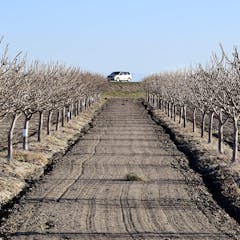
Articles on Irrigation
Displaying 21 - 40 of 102 articles

Coffee capsules aren’t the biggest carbon culprits. It’s better to use a capsule than to waste coffee and water.

Proper dam management can help check flooding in Nigeria.

The ability of the Osun River to support biodiversity is being threatened by pollution and can only be rescued if the contamination ends.

The Agricultural Internet of Things is making farming more efficient. An information technology expert describes some of the challenges of working with sensors and antennas underground.

Unlike this time, the dry summer of 1976 followed a particularly dry year.

Stemming the water crisis in the western US will require cities and rural areas to work together to make water use on farms – the largest source of demand – more efficient.

Researchers have long argued that greywater could bolster South Africa’s food security if it’s used to water domestic food gardens.

We need a radical rethink of water resource planning. Strategies should include reusing water and moving water physically to water-scarce areas.

Water is central to adapting to climate change, but very few of the strategies put in place to respond to water hazards or ensure its availability have been evaluated.

Environmental footprint calculators may promise to help consumers lead a greener life. But they may in fact encourage choices that don’t benefit – or even harm – the environment.

Groundwater is the second-largest store of water on Earth. Governments and industry use groundwater reservoirs to store waste, but it may also have environmental functions that haven’t been revealed.

important decisions must be made today for urban greening programs to succeed in a warmer world.

Constructed ice domes release water during dry periods when rain is blocked by high mountain ranges, stifling essential crop cultivation for rural communities.

As surface water diminishes in the Western US, people are drilling deeper wells – and tapping into older groundwater that can take thousands of years to replenish naturally.

Barriers to independent national decision making in farming need to be challenged if agricultural sustainability is to be developed.

Kenya needs to address spending inefficiencies to attain the goals outlined in the budget.

Drought conditions are so bad, fish hatcheries are trucking their salmon to the ocean and ranchers are worried about having enough water for their livestock.

The US has one of the highest groundwater use rates in the world. When wells run dry, households may opt to conserve water, find new sources or sell and move.

New research finds water markets in the southern Murray-Darling produce benefits of around $117 million per year.

First Nations people have almost no say in how water is used in Australia. The Productivity Commission’s latest report does little to address that.
